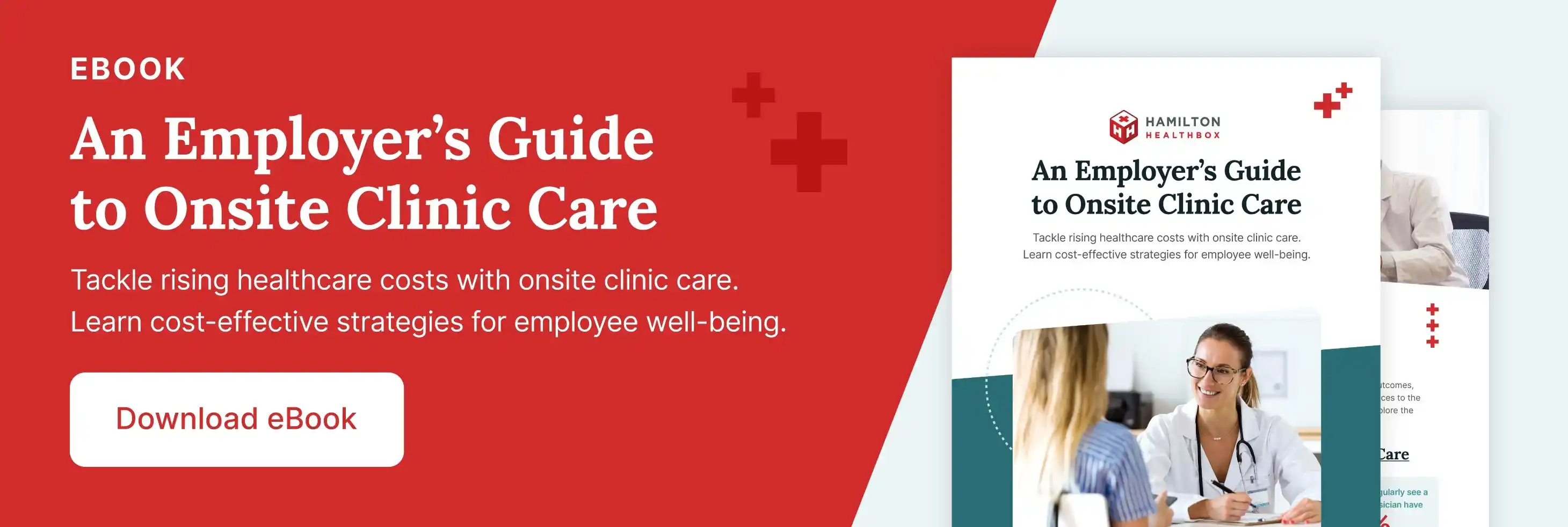
Healthcare has always been one of the most expensive benefits employers provide, and there is no sign of that changing anytime soon. Although healthcare costs lagged behind inflation in 2022, they are expected to grow by 5.4% in 2023. This increase could put employers in a troubling position.
According to the 2022 McKinsey Healthcare Stakeholder survey, more than 70% of employers said that premium increases higher than 4% would be unsustainable. As a result, the respondents said they would consider raising employee contributions. But in today’s tight labor market, such action could impact recruitment and retention.
How can employers stabilize healthcare costs for themselves and their employees while meeting the expectations of today’s workers? Research has shown that an effective solution is to make greater use of primary care and chronic care services. Both are associated with lowering costs, increasing patient satisfaction, and reducing hospitalizations and emergency room visits.
What Is the Relationship Between Primary Care and Self-funded Health Insurance?
In a self-funded health insurance model, employers assume the financial risk associated with providing healthcare benefits to their employees. This means that a business pays its workers’ claims as they occur, instead of paying an insurer one lump sum, as is the case with fully insured plans. Employers can process workers’ claims themselves, or they can outsource to a third-party administrator (TPA). Most TPAs offer additional services such as collecting premiums, contracting for PPO services, and reviewing claims, as well as other functions related to administering and operating a health plan.
For businesses that self-fund their health benefits plans, supporting patient health at the primary care level is especially critical. When employees don’t use primary and chronic care services, they often need to take more time off work and incur higher medical expenses for health conditions that could have been either prevented or treated in less intensive settings than an emergency room. The result is not only damaging to an employee’s health, but it can also become extremely costly for companies with self-funded health plans. Unexpected, catastrophic claims can strain a business’s cashflow and budgets. To improve access to and use of primary and chronic care services, companies that offer self-funded health insurance are turning to employer clinics as a viable solution.
How Can Employer Health Clinics Support Self-Funded Plans?
Employer health clinics can vary greatly depending on the needs of the organization. The care setting could be a small, converted office space, a stand-alone facility, or a mobile unit, all staffed by medical professionals. Regardless, the key is that healthcare services are available onsite, which facilitates active engagement by workers.
The convenient access that onsite care provides can improve employees' use of preventive screenings, immunizations, lab work, and services that they might not otherwise receive. For those employees with chronic illnesses—some that may have been undiagnosed before visiting their employer health clinic—increased access via onsite care can result in better management of their conditions. Employer health clinics can also impact productivity because workers will spend less time away from their jobs to travel to their doctors. Furthermore, by providing healthcare services in the workplace, businesses that self-fund their health benefits plans may not only have healthier, happier employees, but they may also see lowered and more predictable total costs of care.
How Can You Bring Onsite Care to Your Workplace?
If employer health clinics sound like an effective way to stabilize costs while improving employee health, where should you start? To illustrate the process, let’s look at the steps that Healthbox™ takes to deliver its hybrid onsite model, which pairs in-person care with telehealth services that are accessible around the clock.
-
Step 1. Planning
Once you’ve identified and met with an onsite care solution provider, your upfront conservations should center around your employee population and its specific, nuanced needs. For example, would your workers benefit from access to a generic drug plan? Do you have employees with high deductibles for whom access to in-network clinicians is important? Would you benefit from full or part-time onsite care?
Once those needs are identified, Healthbox™ brings in its clinical operations team to drill down and formalize what the onsite care program will look like. Client site visits will also occur to scout possible clinic space locations. After the contract is signed, key employer stakeholders and Healthbox™ participate in weekly meetings to document the details of the clinical program. Although always important, communication between the employer and the onsite care company is critical during the planning phase to ensure that goals and expectations are aligned. -
Step 2. Working with Health Plans and TPAs
For businesses that self-fund their health benefits plans, clinics do not have a relationship with the health plan because the health plan isn’t paying the clinic. For high-deductible plans, Healthbox™ ensures that providers are in-network.
It’s recommended that self-funded plans partner with a TPA for two main reasons. The first is simplification. TPAs handle all claim submissions, which not only eliminates extra work for employers but also minimizes opportunities for error since filing claims is part of a TPA’s core business. Second, TPAs collect important data that can be shared with the employer. In a self-insured plan, claims aren’t being paid by the TPA, but the clinic can still file zero-dollar claims back to the TPA, which allows the TPA to provide important utilization metrics, such as how many employees received annual physicals or screenings. -
Step 3. Supporting the Deliverables
Once a clinic is live, communication with employees becomes an active part of an employer’s strategy. Healthbox™ will work with the employer’s HR team on ways to engage workers so that they take advantage of the preventative services available to them onsite. This might take the form of raffles for employees who have completed their annual physicals. Healthbox™ also helps create monthly communication campaigns, such as breast cancer awareness, to drive employees to the clinic. Healthbox™ also ensures that internal communication flows smoothly so that if the employer has a new hire, for example, the clinic can message that individual about pre-employment physicals or preventive screenings.
-
Step 4. Measuring Results
To adjust and optimize onsite clinic operations, businesses must fully understand what’s working and what isn’t. Healthbox™ partners with employers to decide upon and create reporting metrics and goals. This can occur in regular operational meetings and stakeholder summits to discuss program results and identify areas for improvement.
Healthbox™ has seen its clients achieve:
- $132 decrease in Per Member Per Month (PMPM) total spend
- 3.5 times ROI within 6 months of onsite care use
- 37% increase in preventative physicals
- 43% drop in ER and urgent care visits
- 46% increase in primary care visits
To find out more about how Healthbox™ works with employers to set goals for establishing an onsite clinic and coordinates around health plan requirements, schedule a meeting.


